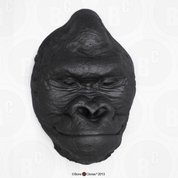
Osteological features characterizing the wrist of monkeys and apes, with a reconsideration of this region in Dryopithecus (Proconsul) africanus. The contrasting morphology found in the wrist joints of semi-brachiating monkeys and brachiating apes. Evolutionary change in the primate wrist and inferior radio-ulnar joints. Recherches sur la morphologie du carpe chez les mammiferes. (ed.), Zoologische Ergebnisse einer Reise in Nederlandisch Ost-Indien, Brill, Leiden, Vol. Versuch einer Anatomie des Genus Hylobates. (ed.), Primate Functional Morphology and Evolution, Mouton, The Hague, pp. Knuckle-walking and the functional anatomy of the wrist in living apes. Wrist rotation in primates: A critical adaptation for brachiators. Chimpanzee bipedalism: Cineradiographic analysis and implications for the evolution of gait. A mechanical interpretation of terminal branch feeding. Locomotion and posture of the Malayan siamang and implications for hominid evolution. Dritter Teil: Spezielle Gelenk und Muskel-Mechanik, Gustav Fischer, Jena.įleagle, J. Handbuch der Anatomie und Mechanik der Gelenke. Locomotion of the slow loris in a designed substrate context. Histoire Naturelle Generale et Particuliere avec la Description du Cabinet du Roi, Tome XIV, Imprimerie Royale, Paris.ĭykjyk, D. The amplitude of pronation and supination with the elbow flexed to a right angle. Comparative osteometrics of the hominoid wrist joint, with special reference to knuckle-walking. The morphology of the triangual cartilage of the wrist. Locomotor behavior in living and fossil pongids. The lorisiform wrist joint and brachiating adaptations in the Hominoidea.
#Articulated chimpanzee hand skin#
The volar skin of primates: Its frictional characteristics and their functional significance. A field study in Siam of the behavior and social relations of the gibbon (Hylobates lar). The range of movement at the wrist joint. Wanderings in the Great Forests of Borneo, Constable, London.īradley, K. New wrist bones of Proconsul africanus and P. The structure and function of fibrocartilages within vertebrate joints. Patterns of gibbon behavior on Hall’s Island, Bermuda. Identification of hominoid wrist specializations as reflecting real phylogenetic relationships or parallelisms depends on how well the phytogeny inferred from wrist morphology accords with those arrived at from the study of other systems.īaldwin, L. Unfortunately, the generalized condition of the chimpanzee’s wrist joint and the very derived condition of the orang-utan wrist provide uncertain evidence as to which of the two was first to diverge from the common hominoid stock. The comparative anatomy and structural specializations of the wrist joint support (a) an early divergence of hylobatids from the common hominoid stock, (b) a common ancestry for gorillas and humans separate from the other hominoids, and (c) a long independent evolutionary period for orang-utans since their divergence from the common hominoid stock, or one that was marked by strong selection pressures for wrist specializations. Orang-utans have the most derived proximal carpal joint, which in many respects parallels that of the slow-climbing nonhominoid primates. The human and gorilla proximal wrist joints, on the other hand, show marked modifications for weight-bearing in terrestrial behaviors. Chimpanzees show a proximal carpal joint that is more generalized than those of the other great apes but more derived than that of hylobatids.

The hylobatid proximal carpal joint is specialized in exhibiting a marked development of those structures limiting forearm rotation, but it is in most respects the least derived- that is, closest to the nonhominoid anthropoids. Although each of the hominoid genera has apparently modified its proximal carpal joint best to serve its characteristic behaviors, all hominoids share a unique proximal carpal joint that permits approximately 160ℴ of forearm rotation. These behavioral differences correspond to structural specializations in the proximal carpal joint of each of the hominoid genera. Humans use the wrist less frequently for supportive purposes than do other hominoids. African apes, especially the gorilla, use the wrist more frequently than other hominoids for terrestrial quadrupedal weight-bearing. However, orang-utans emphasize markedly adducted and flexed wrist postures, while hylobatids emphasize violent forearm and wrist rotation. Both orang-utans and hylobatids usually use the wrist in suspensory behaviors. Observations on the behavior of living hominoids show generic differences in the use and posture of the wrist joint.


 0 kommentar(er)
0 kommentar(er)
